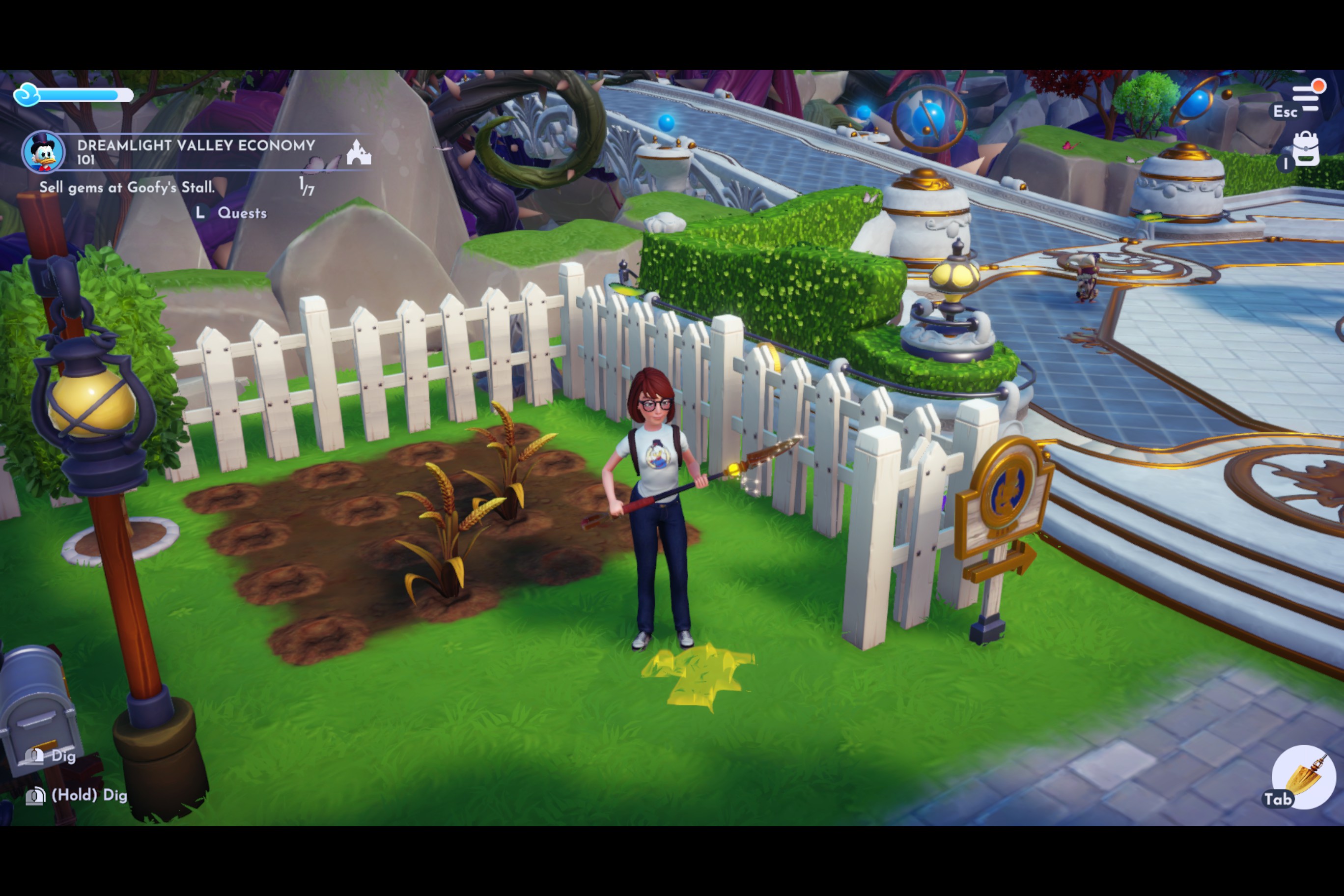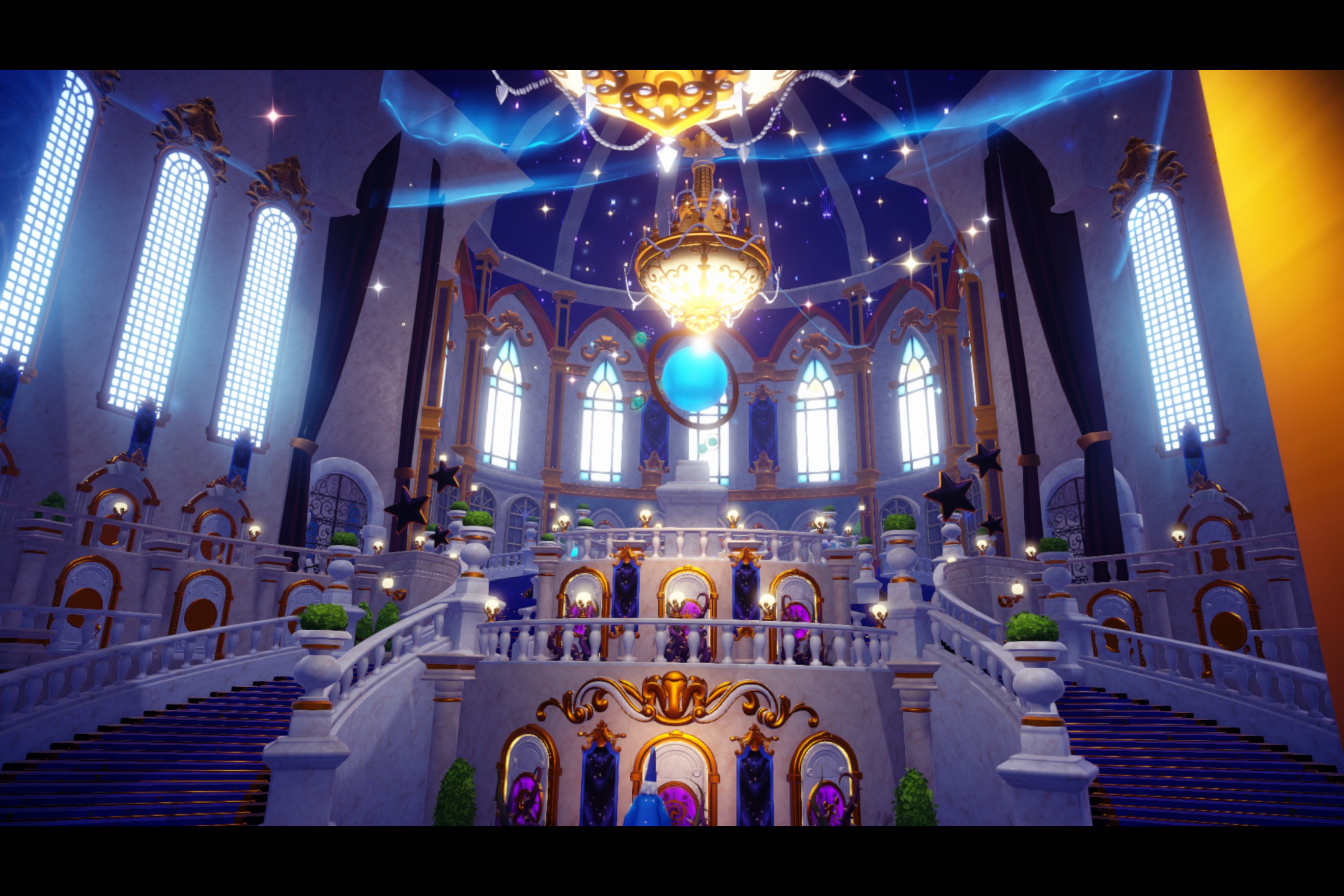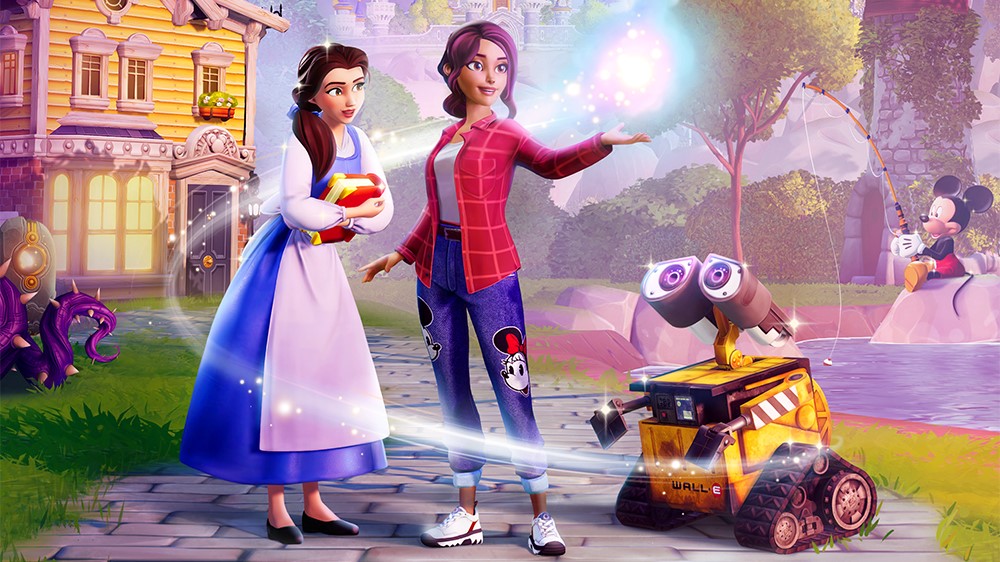Our Verdict
Steep costs and microtransactions taint an otherwise dreamy life sim.
PC Gamer's got your back
What is it? A casual life sim full of Disney charm.
Release date December 5, 2023
Expect to pay $40/£33.50
Developer Gameloft
Publisher Gameloft
Reviewed on 1.80 GHz,Intel® HD Graphics 620, Intel(R) Core(TM) i5-8250U CPU @ 1.60GHz, 8GB RAM
Steam Deck Verified
Link Official site
During the pandemic everyone seemed to find comfort in the gentle virtual maintenance of their Animal Crossing Islands. Pootling about, talking to villagers, and designing things just so. Nothing else has come close to replicating that weird state of zen that comes with pulling weeds and paying debts. Until now.
Disney Dreamlight Valley is very much like Animal Crossing in that you start on a barebones Island, hunt down some tools, help out a money-hungry animal (this time it's Scrooge McDuck rather than Tom Nook) and gradually shape things to your liking.The valley starts off in a right old state, having been overcome by ‘The Forgetting’, a curse leading to boarded up buildings and an infestation of giant thorns. Slowly, you start to clean up, and things go from derelict chic to homely hamlet. As you invite more villagers to join you and unlock more options to beautify your town, you also help lift the malaise.
The whole place looks quite rigid at first, with a shop, restaurant and your house in set places, but the customisation tools are way more impactful than they first appear. You can pick up and move any building, as well as delete paths and move trees to shape the valley as you see fit, all from your inventory menu. However, you have to do a lot of crafting to get things looking properly pristine.
Dreamlight uses a simple gathering and crafting system for the vast majority of its gameplay. You mine rocks with your pickaxe to get stone, forage for colourful flowers, farm and fish to make food, and pick up wood from trees to turn into gorgeous furniture pieces at your crafting table. There are lots of basic pieces to mess about with, from benches to cupboards, but you’ll also find items inspired by specific Disney properties, such as the tea set from Beauty and The Beast, or Mickey Mouse ears to wear. This theming and customisation is where the game really shines—you can really make your own little Disney paradise. There are seasonal events too where you can earn even more stuff, including exclusive character outfits, ice rinks, and even a Ferris Wheel.

Unlike Animal Crossing, which sees you roaming around your Island freely to set your own goals, Dreamlight Valley has a more fixed agenda for you. A lot of areas and crafting opportunities are locked off until you hit an appropriate point in the main story and gather enough resources to do so. Though a little confining, it gives the game a welcome sense of direction. There’s still a lot of freedom in what order you tackle things in, too, so those roadblocks never really feel like they get in the way, instead just giving you a focus as you work towards unlocking your favourite characters.
Things do get a bit grindy after a while though. During the first dozen hours, things unlock at a brisk pace, and new options are regularly opened up to you; but after that, things noticeably slow down, and suddenly you need to spend a lot more time gathering to get the materials you need to progress. Activities like fishing and mining are good fun, but inevitably become a drag when you're having to loop around all the spawn points several times per day.
However, no matter how many signs of The Forgetting you might clear away, you’ll never be able to be rid of the true curse of Dreamlight Valley: its monetisation.
Mouse prices

There are three core currencies. Your basic starcoins are fine—they’re your standard in-game cash equivalent that you can spend on furniture and the like, and make by selling stuff to Goofy. Next is Dreamlight, which is basically fancy magic crystals that you use to fuel spells that open up new biomes and worlds to visit. It can take some time to gather, largely through doing random tasks like gathering 10 apples or mining 6 Garnets. Again, that’s perfectly fine if a little grindy. But it's the game’s third currency, Moonstones, that starts to make it all feel grubby.
Moonstones are paid for with real cash, though you do get free ones on a semi-regular basis in small amounts. They're used to buy mostly cosmetic items—exactly the kind of thing you’d expect in a free-to-play game… even though this isn't one. Still, that would be broadly fine, if it wasn't for the fact that all the good stuff is locked behind Moonstones. That includes cool items like moving train sets or wings for your character, but also quests and premium seasonal event tasks.
Dream bundles include themed clothes, items and story quests, and cost 4000 Moonstones each. That will set you back £18, as you’ll need to grab the ‘Big Moonstone Pack’ of 5500 to get enough for it. It’s a steep ask for what amounts to not very much content, and effectively puts a paywall up in front of interacting with certain beloved characters. Waiting to get enough free Moonstones for things like this can take ages, and there's no way you'll be able to keep up with everything available. As an adult, I can happily justify to myself any irresponsible spending choices I make, but when you consider that a big portion of this game's audience will be children keen to play with their favourite Disney heroes, it takes on a sinister tone.

Scrooge McDuck sums up my sentiments on the game when he says, “The sun’s shining almost as brightly as my money!” Dreamlight Valley is a perfectly lovely game, but it’s marred by its obvious hunger for your cash. Between the price rise of the base game from Early Access, the steep cost of the DLC, and the egregious microtransactions, the amount you’d need to spend to get the full experience feels exorbitant. The game was supposed to be free-to-play on release, originally, and you can very much tell, despite now charging a substantial upfront price. Disney theme parks may charge a pretty penny for entry tickets, but at least they won’t charge you to go on all of the attractions. Dreamlight Valley charges for both. Perhaps the developer has taken a few too many lessons from Uncle Scrooge.
Underneath all the muck of pricing problems, however, that Disney magic still shines. Befriending the likes of Mickey, Elsa, and Stitch while watching your Island slowly transform from tangled monstrosity to a flourishing paradise is immensely satisfying. It has happily filled the Animal Crossing-shaped hole in my life, so it's disappointing that I can’t in good conscience recommend it for the full price it is now. You’re better off waiting for a sale and committing yourself to being choosy about spending those Moonstones.
Steep costs and microtransactions taint an otherwise dreamy life sim.


